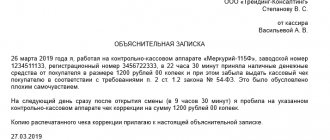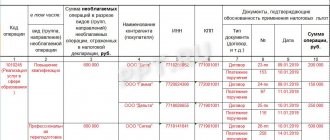Types of notes
There are many varieties of such a document. They differ in parameters, purpose, theme and content itself. The following types can be distinguished:
Accounting
- Note to the balance sheet. Accountants should not only be involved in accounting, but also formulate explanations for reporting. Explanatory notes are submitted to the Federal Tax Service or the management of the organization. With their help, you can understand what the features of the report are.
- To the work program. Employees of educational institutions and other organizations are required to draw up a work program annually. The work of specialists is carried out on the basis of this document. A summary of it is included in the note.
- To the tax office. During tax audits, accounting documents and declarations are assessed. Often inspectors cannot obtain the necessary information using official documentation. Therefore, they may ask for clarification. In it, the company's accountant provides a calculation of the main indicators given in the report.
- For losses. If the financial statements contain information about losses from activities, the Federal Tax Service and the employer may require an explanation from the accountant.
How to compose it correctly?
The explanatory note is compiled not only by students, but also by economists, accountants, lawyers and other specialists. Although the content may differ significantly, you can use a single algorithm. Therefore, the following rules are taken into account:
- a business style for presenting information is selected;
- it is advisable to use professional terms and standard phrases;
- It is not allowed to use stereotypical sentences, so it is important to present only the significant essence;
- It is not allowed to include personal opinions in the text;
- the content depends on the purpose of creating the note;
- if a document is drawn up based on a request from the Federal Tax Service, then the activities of the enterprise are described, and data on its income and expenses are also indicated;
- when drawing up an explanation for a scientific work, information is provided about the purpose of the project, its significance and features;
- during the preparation of documentation for a technical project, the technical parameters of the created item, the area of its use and the reasons for its formation are indicated;
- if a note to the bill is required, then its sections, the expediency of its introduction and other significant points are given.
Important! How easily people reading this document will be able to assess the significance and value of the project itself depends on the literacy of the explanatory note.
General requirements
Drawings for the graduation project
When drawing up a note, standard requirements and conditions must be taken into account. These include:
- the features of the field of activity in which the compiler works are determined;
- Each educational institution has a manual that sets requirements for the form and content of notes;
- a document is drawn up in printed form on a sheet of paper of a standard format;
- Only portrait orientation is used;
- one and a half spacing and font size 12 are selected;
- It is allowed to include lists in the text, and page numbering is also required;
- After each section, you can attach additional material, as well as use diagrams and tables.
Important! The main requirement is ease of reading, as well as the reliability and relevance of the information.
How to write an explanatory note in a thesis
An explanatory note in a thesis can become a separate work. Its volume can be 60-120 pages. However, this volume also includes: title page, table of contents and bibliography. Therefore, you should not be scared right away.
The content of the explanatory note depends on what is emphasized in the thesis. For example, if the WRC focuses on the theoretical part, then the note will contain an addition and commentary on various theoretical aspects.
If the practical part plays the main role in the diploma, then the explanatory note will mostly describe the research, disclose the methods and delve into the results of the work.
Thus, to write an explanatory note in a thesis, you need to expand or go deeper into your research. It is best to discuss this issue with your supervisor. He should tell you what to write an explanatory note about.
The explanatory note for the diploma project should contain: the research topic and its design, scientific methods and calculations, a full description of the experiments carried out and the study of the scientific problem, findings and conclusions, as well as graphic illustrations, tables and diagrams.
What specifically distinguishes an explanatory note from the thesis project itself is the chapter “assignment for the thesis.”
Why do you need an explanatory note in your thesis? In order to give it to the reviewer and supervisor for evaluation along with the thesis project. Also, during the defense of a diploma, the certification commission focuses more on the explanatory note, because it contains more concise and specific information, as well as research results.
Only humanities faculties are exempt from writing an explanatory note. But in some universities it may be customary to write a note in the faculties of journalism and philology. It all depends on the regulations of your university and faculty.
We recommend that you find out whether you need to write an explanatory note or not from your supervisor.
Features of drawing up an explanation for the diploma project
Most often, an explanatory note is written by students who are writing a diploma. Often, members of the certification commission pay more attention to this document rather than to the entire thesis project. The note contains concise information about the topic, essence and features of the diploma. It contains the graduate's research. Therefore, when drawing up this document, the following rules are taken into account:
- conclusions and main points of the project must be included in the text;
- the information must be consistent with the research conducted;
- indicates the fulfillment of the curator’s assignment;
- the text is agreed upon with the supervisor.
What is an explanatory note
An explanatory note is a part of coursework, diploma and dissertation work, which helps to briefly retell scientific research. This is a collection of researcher comments throughout the thesis and dissertation.
Usually, students of technical faculties, economics, and chemistry are forced to write an explanatory note. After all, a note is necessary in order to tell about the entire study in a concise form.
For example, if an architecture student is writing a diploma project on building a house, then in the draft itself he will write: the house will be made of timber, first you need to choose a foundation. I chose such and such a foundation, and I explained why in my thesis.
However, formally, the explanatory note is very similar in structure and design to a scientific work. Its volume can reach the size of the thesis itself, a coursework or a dissertation. Therefore, many students are afraid to accurately state that the explanatory note is only a part. You shouldn’t expect to be able to write only 2 pages of comments.
It is necessary to follow a certain structure when writing an explanatory note. But we'll talk about this later.
So why do you need an explanatory note? Most often, it is on this basis that inspectors assess the readiness of the work and make a decision on admission to defend a diploma or master’s thesis. Therefore, the student needs to carefully work out the structure of the explanatory note.
Writing stages
The process of drawing up explanatory notes is divided into several stages:
- Formation of a plan. Based on it, the optimal text is invented. All items must be placed in strict sequence. Initially, the title page is filled out, after which an annotation is made. After that, the table of contents and introduction are included, and only then comes the main text, divided into separate chapters. All sheets must be numbered, and at the end a conclusion is made and a list of references is left. Applications are attached if necessary.
- Creating a draft. Before creating the actual text, it is advisable to make a draft. It is based on the goals and objectives set when writing the thesis project. The books used by the student must be evaluated and analyzed. The central element of the note is the task of research activity that must be achieved by the graduate. All conclusions contained in the document are supported by diagrams, tables and correct calculations.
- Writing the main text. The lead states the reason for choosing a specific goal and also lists the assigned tasks. The conclusion provides information about achieving the goals of creating the project. Typically, bachelors write a note of 30 pages, and for masters the volume increases to 80 pages. This includes not only the text, but also appendices, title pages, drawings and additional materials.
The perception of the entire work by the certification commission depends on the correctness of the preparation of this document.
Structure of the explanatory note
The structure of the explanatory note is almost no different from the thesis and dissertation. However, it is worth remembering that the explanatory note is just part of your project. Therefore, it must have its own uniqueness. You cannot write word for word, as in a thesis or dissertation. Try to summarize your research, pointing out key points.
So, the structure of the explanatory note includes:
- title page;
- technical task;
- abstract and table of contents;
- introduction;
- literature review;
- scientific methods;
- description of the study;
- conclusions and analysis of results;
- conclusion;
- bibliography;
- applications (graphs, calculations, drawing specifications).
This is the order that must be followed. Do not change the sequence of structural parts - this will be an error.
Next, we will talk in more detail about each section of the explanatory note separately.
Registration according to GOST
Registration according to GOST
To draw up a document, it is important to use the requirements of GOST. For this purpose, a single form is used, which may vary slightly depending on the field of work of the compiler. But important points are taken into account:
- the correct structure of the document is provided;
- the title page must contain the author's full name;
- the title of the document is given;
- the introduction must contain the relevance of the information given in the note;
- an annotation is included, representing the brief essence of the document;
- sections, subsections and individual paragraphs are provided, if any;
- the main text lists the studies or tests carried out and the results achieved;
- At the end, a conclusion is drawn confirming the achievement of the goals.
If a note is made by an accountant, the identified discrepancies are indicated, as well as explanations for this information. If the company’s activities are analyzed, the reasons for the occurrence of losses or unaccounted profits are given. In scientific works it is allowed to use generally accepted conventions.








